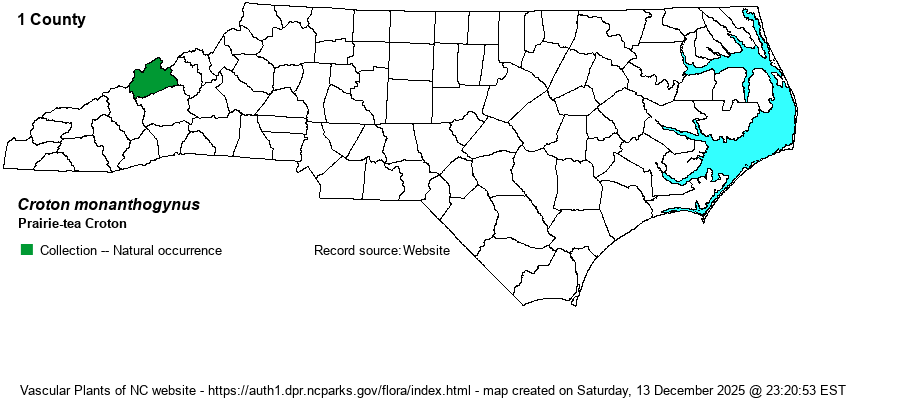| Author | Michaux | |
| Distribution | Mountains only. Known from just two sites in the Hot Springs area of Madison County. Specimens from Union County are misidentified and actually are C. lindheimerianus.
PA and WV to IA and NE, south to GA, northern FL, TX, AZ, and Mex. Many populations in Atlantic Coast states are adventive and not native, but the ones over limestone in Madison County are assumed to be native. | |
| Abundance | Very rare. Of the two sites, at least one is still extant, with at least 30 plants counted in 2012. This was a State Endangered species until around 2024, but NCNHP felt that the species could be adventive from farther west, and removed any state protection and gave the State Rank as SU (Undetermined). However, one of the editors (LeGrand) has seen the species in Madison County and feels that it could be native there, and thus we continue to suggest a rank of S1 and status of Significantly Rare. | |
| Habitat | Dry soil, over limestone; requires high pH soil. | |
| Phenology | Flowering and fruiting June-September. | |
| Identification | Prairie-tea Croton is a low (1-2 feet), spreading, many-branched semi-woody herb. Leaves are elliptical to rounded but less than 1 inch long, pale whitish green on the undersides, and densely hairy with stellate hairs. The numerous inflorescences are short (maximum of 1 cm) and congested racemes at leaf axils. This plant has a layered look, with horizontally spreading branches, often somewhat wider than tall (when often under 1 foot high). | |
| Taxonomic Comments | None
| |
| Other Common Name(s) | One-seed Croton. Typically called just Prairie Tea, but this is a highly misleading common name; it is not a tea species, of course, and as other members of the genus Croton have the group name also of Croton, the best name is Prairie-tea Croton. | |
| State Rank | SU [S1] | |
| Global Rank | G5 | |
| State Status | [SR] | |
| US Status | | |
| USACE-agcp | | |
| USACE-emp | | |

